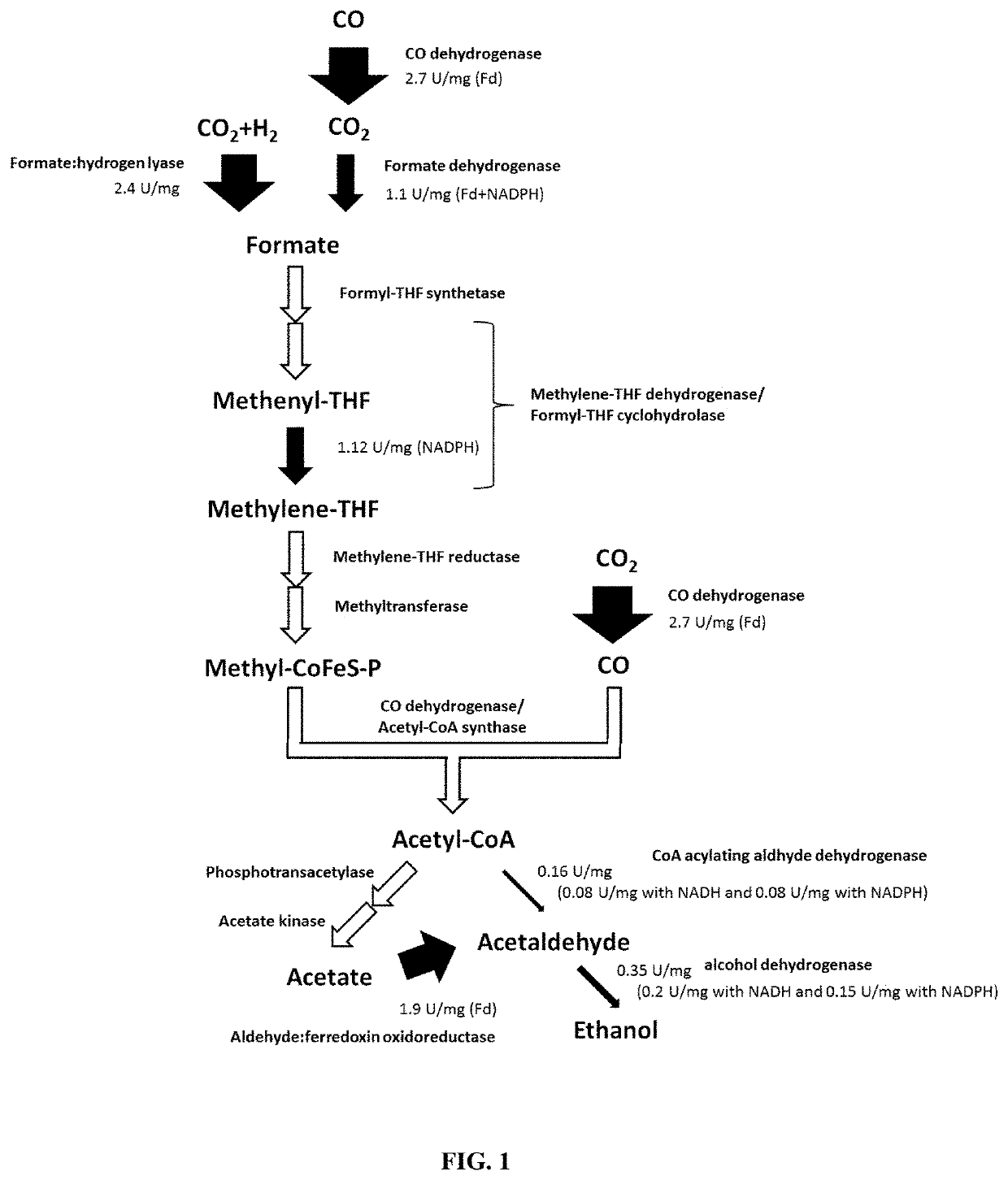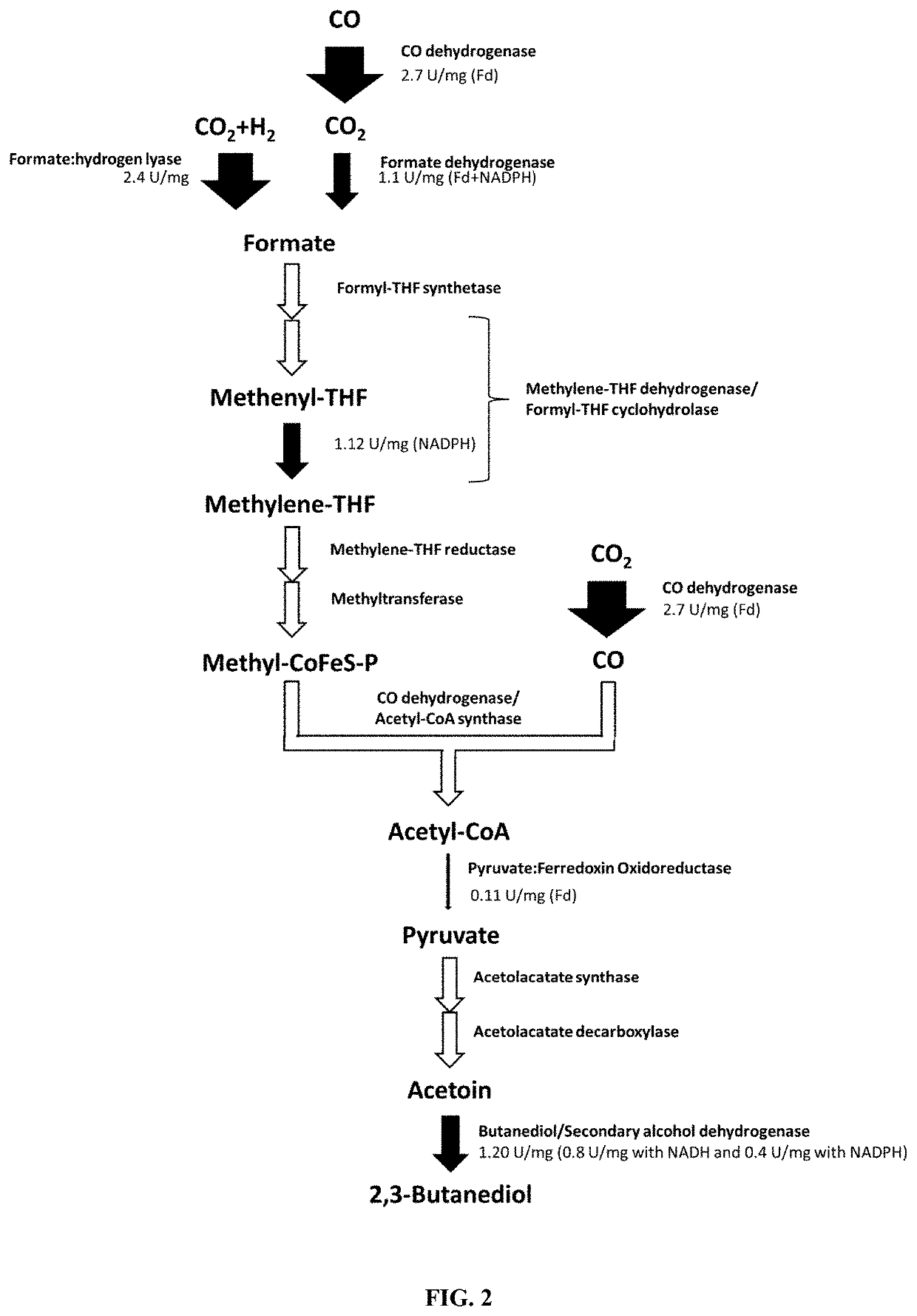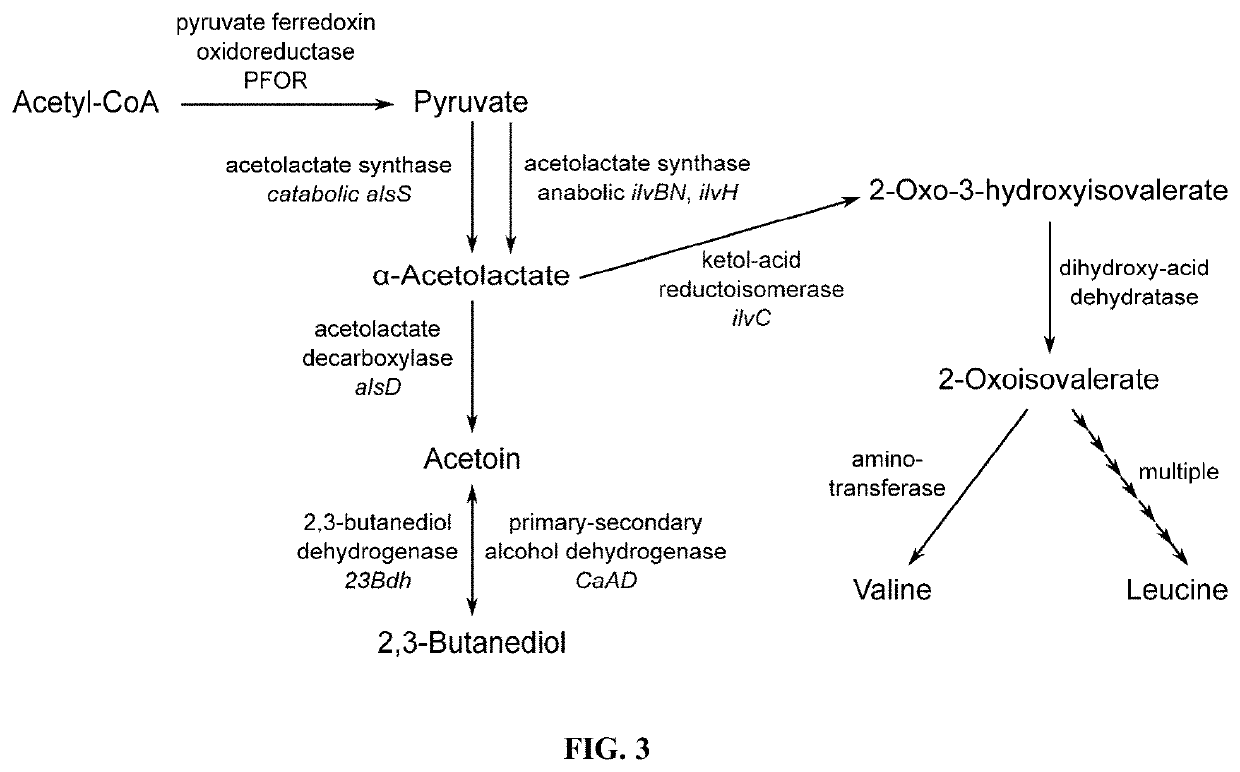Recombinant microorganisms exhibiting increased flux through a fermentation pathway
a technology of recombinant microorganisms and fermentation pathways, which is applied in the direction of lyase, transferase, carbon-carbon lyase, etc., can solve the problems of natural microorganisms and certain commercial objectives cannot be achieved
- Summary
- Abstract
- Description
- Claims
- Application Information
AI Technical Summary
Benefits of technology
Problems solved by technology
Method used
Image
Examples
example 1
[0077]This example describes the analysis of fermentation pathways of carboxydotrophic bacteria such as C. autoethanogenum, C. ljungdahlii, or C. ragsdalei for bottlenecks in the production of ethanol and 2,3-butanediol.
[0078]Oxidoreductase enzyme steps of the Wood-Ljungdahl pathway and fermentation pathways to ethanol and 2,3-butanediol were assayed to determine their activity. Oxidoreductase reactions are particularly suitable since they are coupled with one or more co-factors whose reduction or oxidation can be measured. A synthetic redox dye such as methylviologen or benzylviologen can be used for this purpose as well. The enzymes in these pathways are involved in autotrophic growth including uptake and utilization of CO, CO2, and H2 gases, as well as product formation.
[0079]The enzymes assayed and their activities are detailed in FIG. 1. All assays were performed using a synthetic redox dye as control, either methyl viologen (MV) or benzyl viologen (BV). Co-factors ferredoxin (...
example 2
[0093]This example demonstrates increasing the flux through a fermentation pathway.
[0094]The general methods described in Example 3 of PCT / US2014 / 041188 may also be used to introduce pyruvate:ferredoxin oxidoreductase, acetolactate synthase, and / or acetolactate decarboxylase gene into the recombinant Clostridium microorganism of the invention.
example 3
[0095]This example identifies the conversion of acetyl CoA to pyruvate by pyruvate:ferredoxin oxidoreductase as a bottleneck in the production of 2,3-butanediol.
[0096]As seen in FIG. 2, the bottleneck for 2,3-butanediol production is the reaction from acetyl CoA to pyruvate catalyzed by pyruvate:ferredoxin oxidoreductase. While all other measured reactions showed at least an activity of 1.1 U / mg, this rate limiting reaction exhibited an enzyme activity of only 0.11 U / mg (10%) in the presence of ferredoxin. This is 90% less than all other reactions in the pathway. To go at least some way towards overcoming this bottleneck and increase the product yield from the fermentation, an endogenous pyruvate:ferredoxin oxidoreductase enzyme may be overexpressed or an exogenous pyruvate:ferredoxin oxidoreductase enzyme may be introduced and expressed.
PUM
| Property | Measurement | Unit |
|---|---|---|
| temperature | aaaaa | aaaaa |
| pressure | aaaaa | aaaaa |
| pressure | aaaaa | aaaaa |
Abstract
Description
Claims
Application Information
 Login to View More
Login to View More - R&D
- Intellectual Property
- Life Sciences
- Materials
- Tech Scout
- Unparalleled Data Quality
- Higher Quality Content
- 60% Fewer Hallucinations
Browse by: Latest US Patents, China's latest patents, Technical Efficacy Thesaurus, Application Domain, Technology Topic, Popular Technical Reports.
© 2025 PatSnap. All rights reserved.Legal|Privacy policy|Modern Slavery Act Transparency Statement|Sitemap|About US| Contact US: help@patsnap.com



